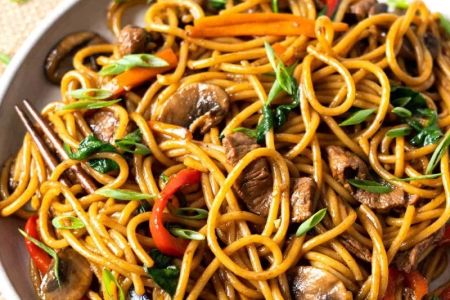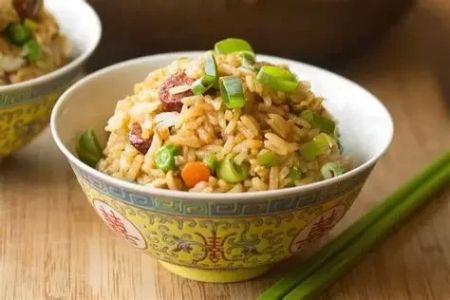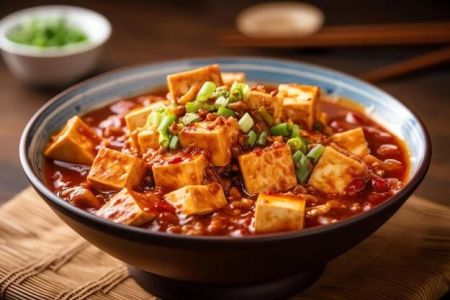- why-chinese-vegetables-deserve-a-place-in-your-kitchen
- bok-choy-flavor-versatility-and-cooking-techniques
- gai-lan-the-bittersweet-powerhouse
- other-must-know-chinese-greens
- how-to-incorporate-chinese-vegetables-into-your-meals
- real-life-experiences-and-a-modern-kitchen-take
1. Why Chinese Vegetables Deserve a Place in Your Kitchen
If your veggie rotation is feeling a little predictable—think broccoli, spinach, carrots—it’s time to branch out. Chinese vegetables like bok choy, gai lan, and choy sum bring not only unique textures and flavors to the table, but they’re also packed with nutrients and easy to cook. These leafy greens are a staple in countless Asian dishes, from quick stir-fries to rich soups, and they're becoming more accessible in U.S. supermarkets and farmers markets.
Chinese cuisine has long prized balance—bitterness, sweetness, crunch, and tenderness all in one dish. Chinese vegetables play a central role in achieving that harmony. Whether you're a home cook, a food adventurer, or someone trying to eat healthier, learning how to cook with these greens opens up a new world of possibility. For the best kitchen tools and ingredients to complement your new favorites, Chinese Food offers curated resources tailored for this kind of cuisine.
2. Bok Choy: Flavor, Versatility, and Cooking Techniques
Bok choy (also known as pak choi) is one of the most recognized Chinese vegetables in the U.S. It comes in several varieties—baby bok choy being the most tender and mild. The white stalks are crunchy, while the dark green leaves soften beautifully with heat, making bok choy perfect for stir-frying, blanching, or adding to noodle soups.
A popular home-cook trick is to cut baby bok choy lengthwise and pan-sear it in sesame oil with garlic and soy sauce. The slight caramelization brings out its natural sweetness. Add a splash of broth and let it steam covered for a couple of minutes—it’s that easy.
One mom from California shared how bok choy became the only green her picky toddler would eat, thanks to a simple stir-fry with oyster sauce. It’s all about timing and seasoning—bok choy only needs 4–5 minutes on heat to become tender yet crisp.
3. Gai Lan: The Bittersweet Powerhouse
Gai lan, or Chinese broccoli, is a bold-flavored green known for its thick stems and slight bitterness. Often mistaken for broccolini, it’s actually a different plant and has a denser bite. This bitterness is exactly what makes it such a standout when cooked properly—it pairs perfectly with rich sauces and proteins.
In many dim sum restaurants, gai lan is simply blanched and topped with a drizzle of oyster sauce. But at home, you can go further. Try sautéing it with ginger and garlic, then deglazing the pan with Shaoxing wine or light soy sauce. This method unlocks the green’s natural umami and tames the bitterness.
A restaurant chef once told us that the key to cooking gai lan is to trim the lower stem and blanch it first—this softens the fibrous stalks and shortens sauté time. Pro tip: don’t toss the stalks—they hold the most flavor.
4. Other Must-Know Chinese Greens
4.1 Choy Sum
Often mistaken for bok choy, choy sum is a flowering green that’s sweeter and more delicate. It’s a quick-cooking star that thrives in hot wok dishes. Stir-fry with a touch of garlic and a pinch of salt for a clean, vegetable-forward side dish. Its yellow blossoms signal tenderness and fresh harvest.
4.2 Chinese Napa Cabbage
A staple in hot pot and dumpling fillings, Napa cabbage has mild flavor and a soft crunch. It holds up well in soups and ferments beautifully, making it a go-to for homemade kimchi and Chinese pickles.
4.3 Water Spinach (Ong Choy)
A beloved summer green, water spinach has hollow stems and tender leaves that wilt beautifully in garlic oil. It’s popular in Southeast Asian dishes but widely used in southern Chinese cooking too. Quick stir-frying is best to retain its texture and vivid color.
5. How to Incorporate Chinese Vegetables into Your Meals
You don’t need to cook a full Chinese meal to enjoy these greens. Chinese vegetables are highly adaptable and work well as sides, salad bases, or additions to your current favorites.
5.1 Stir-Fry Additions
Try mixing chopped bok choy or choy sum into your next chicken stir-fry. These greens add moisture and visual contrast. Add them in the last 3 minutes of cooking to keep them vibrant and slightly crisp.
5.2 Noodle and Rice Bowls
Top ramen or jasmine rice with blanched gai lan and a fried egg, then drizzle with soy sauce and sesame oil. The greens absorb flavor while adding nutritional bulk to your bowl.
5.3 Soups and Broths
Chinese napa cabbage is an excellent addition to chicken or tofu soups. It softens into the broth without falling apart, making it a perfect cold-weather comfort.
5.4 Grill or Roast
Baby bok choy holds up surprisingly well on the grill. Slice in half, brush with sesame oil, and char until just tender. Serve as a side to grilled meats or tofu for a fusion-style plate.
6. Real-Life Experiences and a Modern Kitchen Take
A Seattle home cook told us how adding gai lan to her family’s weekly meals helped reduce their red meat intake—its strong flavor makes dishes feel fuller. Another user from New York shared how cooking bok choy regularly helped her rediscover her cultural roots and introduce her kids to Chinese flavors in a simple, fun way.
The biggest barrier for many U.S. cooks is familiarity. But once you try these vegetables, you'll realize how quickly they fit into any meal prep routine. They're affordable, widely available, and incredibly good for you.
If you’re unsure where to start or need authentic pantry staples, the team at Chinese Food curates everything from seasoning sauces to fresh produce recommendations, so you’re never guessing what to buy or how to use it.







